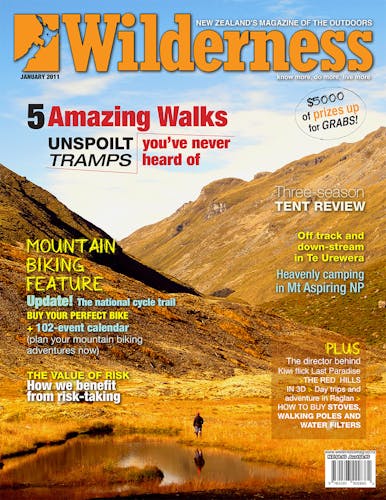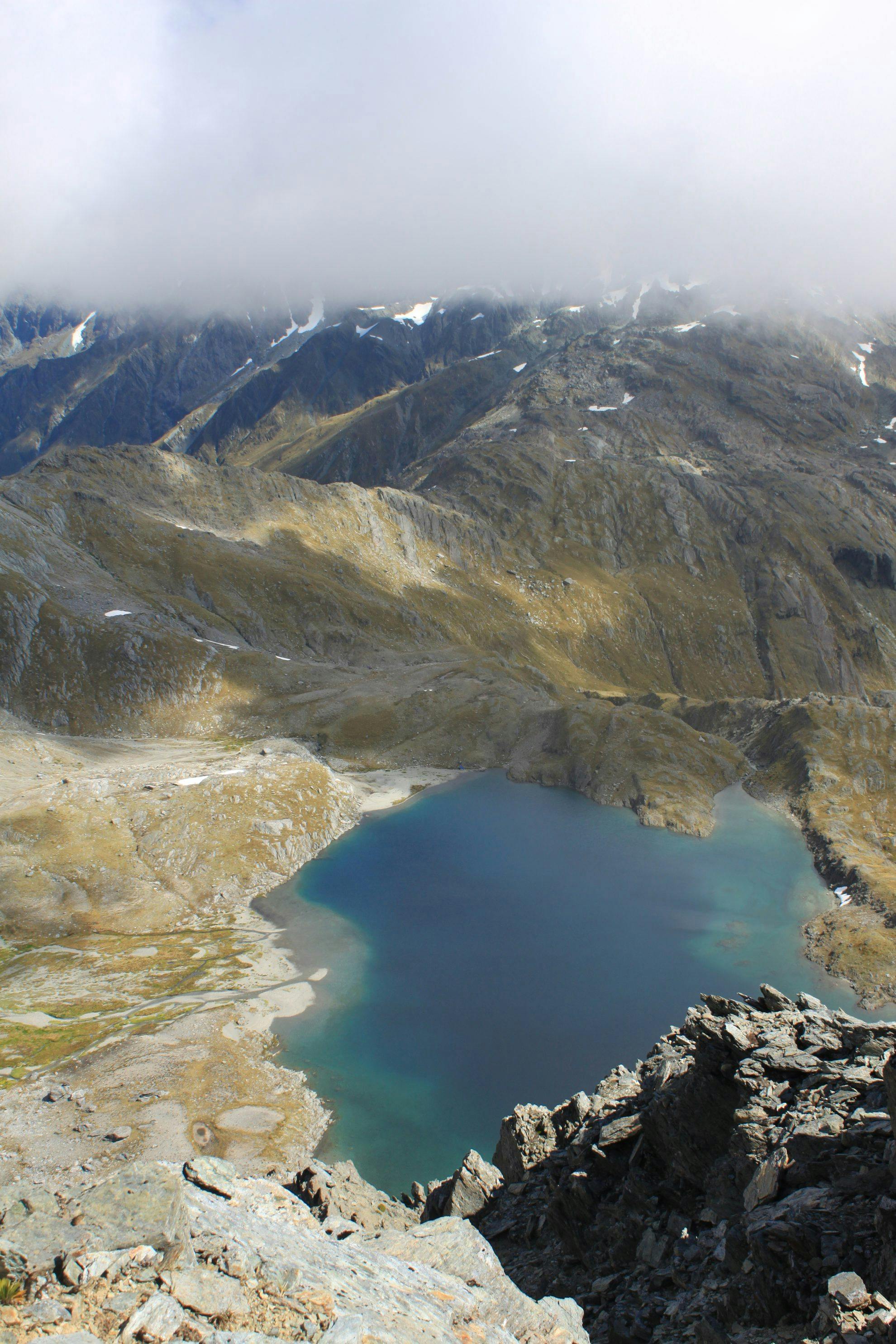Letter of the month
Age no barrier to Alps crossing
I loved your article on ’10 Ways across the Alps’ (Wilderness, November 2010). Two years ago, two of us in our sixties went up the Poulter, over Minchin Pass to the Taramakau, then back up the Otehake and over Taruahuna Pass – a double crossing. The Otehake is very rough, and a good addition to your list. The previous year we did the Dusky Track, in a way a crossing of the Divide.
This year we did the Five Passes in reverse with two friends aged 58 to 65. Next year we plan to cross the Spensers, from Lake Rotoroa to Lewis Pass. There are so many good routes to suit everyone and age is no barrier. I would love to hear of more potential crossings from your contributors and readers.
– Peter Jerram
The end of an era
I read with some interest both the excellent article by Maina Perrot and your editorial on ‘Nature Deficit Disorder’ (Wilderness, October 2010). I thought you might like to share my childhood experiences.
We lived in Wellington in Happy Valley Road, Ohiro Bay. We grew up in the 50’s and 60’s in a street in Wellington where everyone new everyone. Many parents put their time into the local Ohiro Bay School committee and everyone walked to the local school. As kids, the hills around Happy Valley Road were our playground. We would play our spontaneous games in any region from the Willoughby Farm just north of the school to behind the Bata Shoe Factory and all the way around to Red Rocks. I think of the miles we must have covered playing kid’s games.
We had no way of telling the time but somehow we knew that tea was on the table at 5.30pm and we were never late. There was no public transport in the weekends. If we wanted to go to the pictures, either the Empire Theatre at Island Bay or the Vogue at Brooklyn was our destination. We walked each way.
As we grew up and our schooling took us away from Happy Valley, we could catch a school bus but to come home we would walk all the way from Island Bay. Indeed, anywhere we went, either to scouts in Island Bay, or a visit to the city, we always ended up walking home in any weather at any hour.
It saddens me to see the masses being driven to and from schools and sport. Kids need their independence. We certainly had that and looking back, everything we did was always in groups. Our parents placed a great deal of trust in their kids at the time.
Happy Valley seems a long time ago but I cannot think of one kid of my era that didn’t make it in life.
– John Sinclair, Otaki
Chaffeys Hut history
I was most intrigued about some of the information that was written about the Cobb Valley (Wilderness, November 2010), most of which was correct but in saying that, the piece about Chaffeys Hut was incorrect.
The author wrote that the hut was built by Henry Chaffey, this however is not the case. Chaffeys Hut was built by Jack McBurney who was a Forest Service Ranger in the Cobb region. Jack first arrived in the Cobb in January 1952 and became responsible for issuing hunting permits as well as monitoring the rain fall in the area. He was the go-to guy if someone needed to know something. He was also very good at entomology.
Jack began building the proposed hut in 1953 because he saw it was a great spot to have a little hut up the valley away from the noise and construction of the dam. Jack mostly built up the hut over time by himself but occasionally had the help of his friend Jack Cowie, who was also working on the dam at the time. The frame was made from juvenile silver beech trees while the walls were made out red/hard beech. The iron roof was a bonus for Jack as the Myttons Hut was being dismantled towards late 1953 early 1954, so he scored the iron, put it in a dinghy and rowed all the way upstream to the hut. By mid-1954 the hut was finished and in use mostly by Jack but also by others later on.
The hut was aptly named Chaffeys Hut’ because of the confluence of Chaffeys Stream and the Cobb River to where the hut still stands today – just.
Jack moved to Rotorua in 1963 to continue work with the Forest Service and before this had become quiet close friends with my granddad Arthur Holloway who also joined the Forest Service in the biology department.
Jack also spent time climbing mountains and in the Airforce with the late Sir Ed Hillary.
Jack and his wife Shirley remain very good friends of my family (we class them as family) and although Jack has been gone for sometime now, Shirley is still with us and is always up for a good chat about the antics Jack endured over his time. And she even has one or two of his old logbooks that she loves to pull out from time to time.
– Steve Holloway, email (16/11/10)
Traps won’t make a difference, except to your stomach
If everyone took a lightweight possum trap on their trips into the bush, as advocated by Mick Abbott in his article ‘Hunter Reborn’ (Wilderness, December 2010), it wouldn’t make much of a dent in the 70 million or so possums in New Zealand. But I do recommend it as an excellent way of catching food, and saving the weight of carrying that food in with you.
Possum is an excellent source of meat. There is nothing wrong with it, except that it can be tough. But one gets used to that, and if one eats it, it allows one to stay in the bush and explore it for longer without running out of supplies.
It should be easy to go away for two weeks at a time for instance, without returning to civilisation, and it is really easy to catch possums. They are nearly everywhere except just after a 1080 drop.
– Stephen Conn, Nelson
Pike river reflections
Talkback radio and other right wing sources have blamed the Greens for the Pike River tragedy, claiming they blocked open-cast mining. Critics ignore the fact it would have been uneconomic in the rugged terrain anyway.
The real blame rests with management, who allowed much higher levels of methane than accepted overseas. Government has already indicated the mine will reopen regardless of the results of an inquiry, as it is a $300 million investment.
– Stan Mackowiak, email







